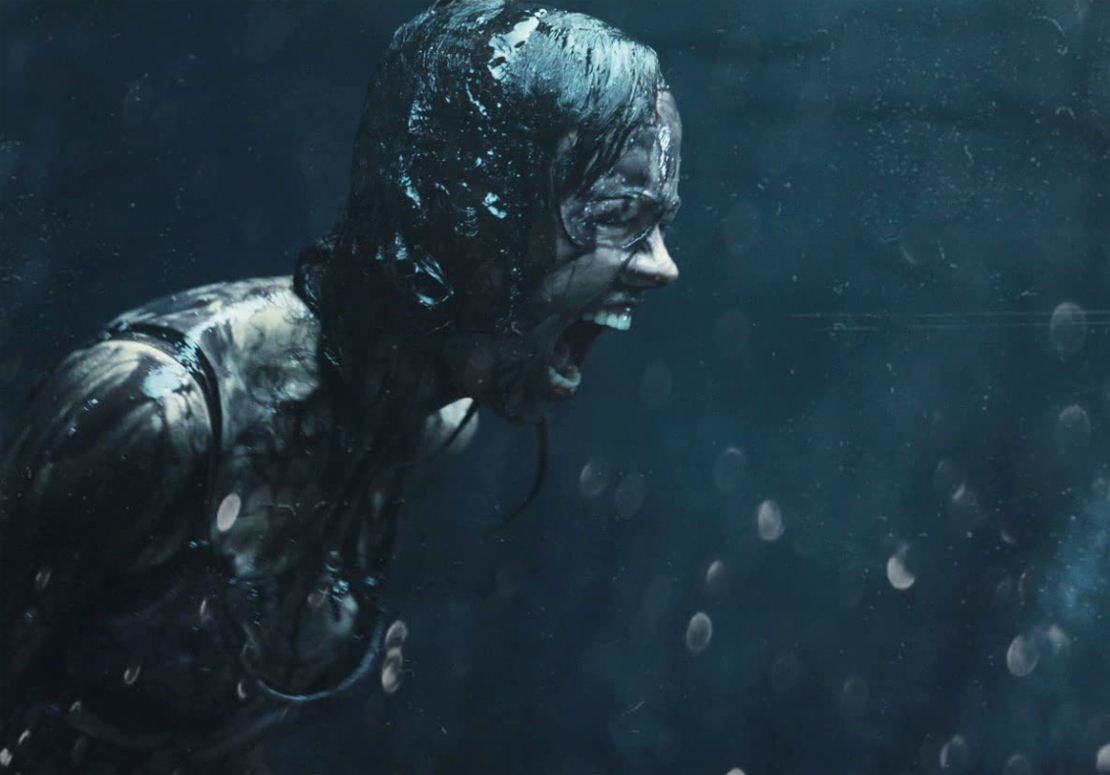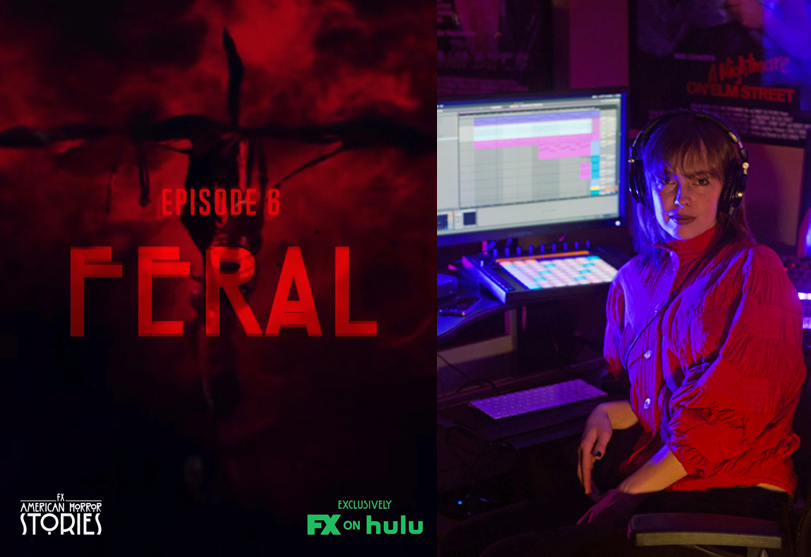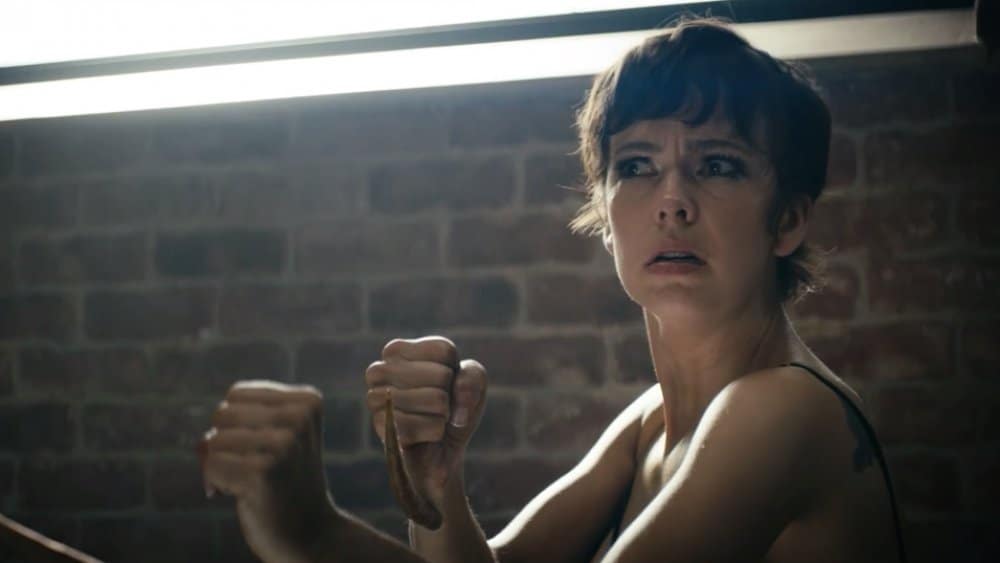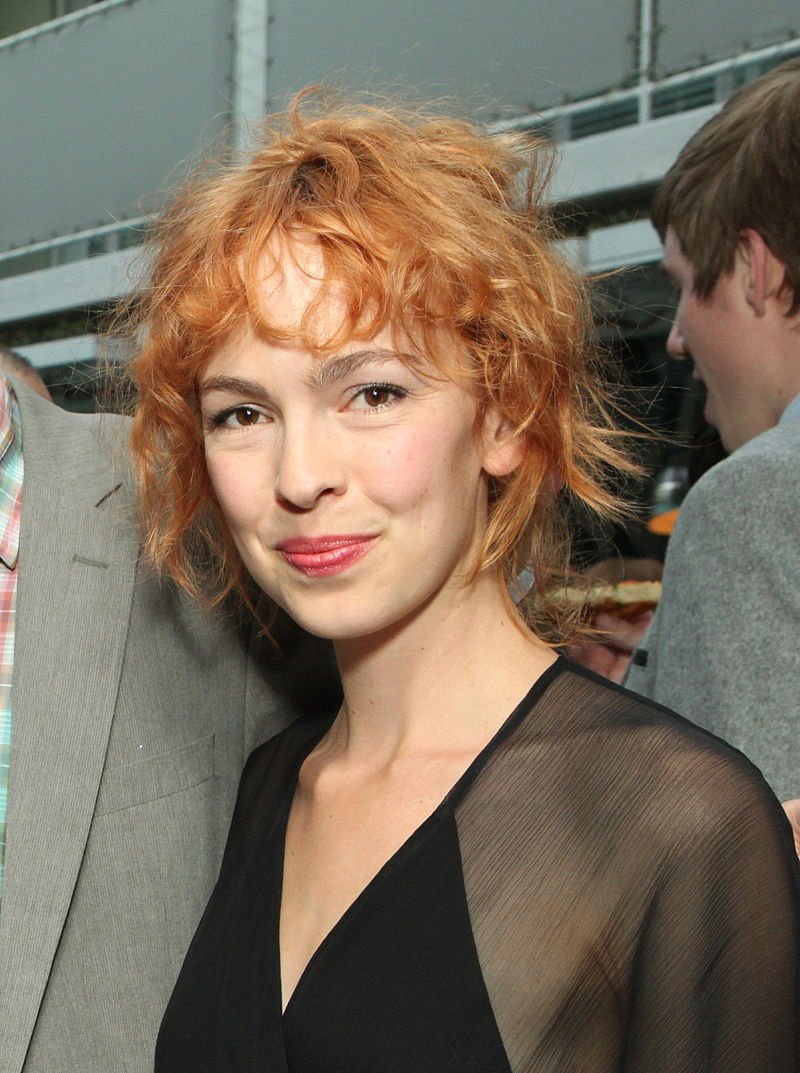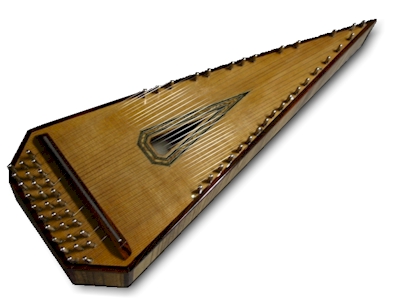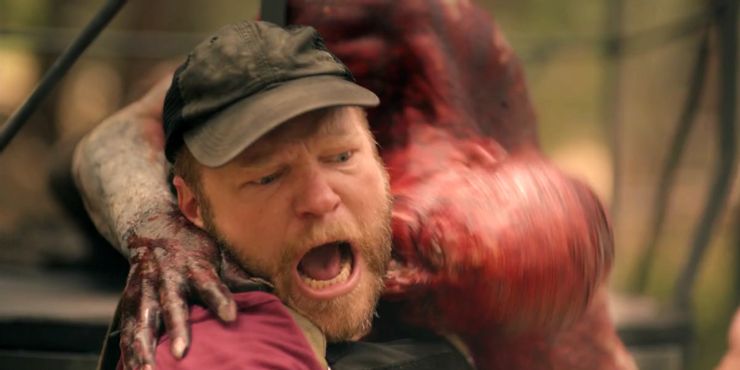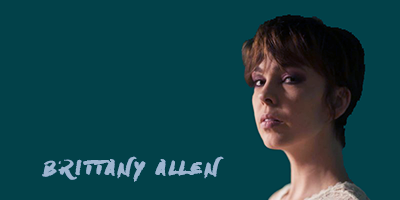August 27, 2021
Brittany Allen: Scoring AMERICAN HORROR STORIES “Feral”
Interview by Randall D. Larson
AMERICAN HORROR STORIES is a spin-off of Ryan Murphy and Brad Falchuk’s award-winning anthology series AMERICAN HORROR STORY. The weekly anthology series will feature a different horror story each episode. Since 2011, the creators of AHS have redefined the horror genre with various installments featuring a creepy asylum, a coven of witches, a traveling freak show, a haunted hotel, and the apocalypse itself. The television series sprouted a legion of dedicated fans who anticipate what terrors the next chapter will hold. The franchise is produced by Twentieth Television. With AMERICAN HORROR STORIES, individual episodes are created by various writers/directors, and scored by various composers, including Mac Quayle, Ariel Marx, Brittany Allen, and others. To keep the tie-in together, the theme music for the spin-off series is the same music used on AMERICAN HORROR STORY, composed by César Dávila-Irizarry and Charlie Clouser. The series is now showing on Hulu.

Brittany Allen is a multi-disciplinary artist, who on the heels of a successful career as an actor, is now emerging as one of the most exciting young female composers to watch. Brittany won a Daytime Emmy in 2011 for her role on ALL MY CHILDREN, and was most recently lauded for her role as Popclaw on THE BOYS amidst other memorable roles in JIGSAW, SCHITT’S CREEK, TAKEN, and more.
In AHS’s sixth episode, “Feral,” a husband and wife’s child disappears only to be found later in the care of a tribe of wild, feral humans living in the woods. Inspired by the primal nature of the story, Brittany recorded herself playing instruments with an instinctive recklessness, banging on drums and eking out every sound imaginable abusing a medieval instrument called a psaltery – as if she were one of the wild folk making “music.” Said Allen, “I wanted moments of stark, naked, broken sounds, peeking out from each other, their only cohesion being how incohesive they were.” She knew, of course, the “feral” music would only land in a meaningful way if it were connected to the pain and suffering of the parents losing their son. Using the same psaltery, she built a gentle theme that represented both the innocence of their child and the gaping hole that his disappearance left behind.
I spoke with Brittany Allen shortly after “Feral” debuted on AHS about how the score was constructed and developed, and her thoughts about scoring modern horror. – rdl
Q: You’ve been acting in films and television since 1999 – what prompted you to move into composing music in 2018?
Brittany Allen: I’m just a very creative person and whenever I wasn’t acting I was teaching myself how to draw, I was dancing, I was making music. I just can’t not create! Like all facets of this industry, acting can occasionally be a very inconsistent line of work. Even on my good years I got to the end of the year and I looked back at what I had done as an artist and I was left with a feeling that I wasn’t giving all of myself to art in general, and I was withholding some of what I have to offer and some of what I have to say. That was a persistent feeling that had been tugging at me for a number of years. I’d actually studied musical theater in high school and college so music was a humongous part of my life as a teen and young adult. Then throughout my twenties I really committed myself fully to film and television acting, but I was feeling like there was something missing. I guess that feeling will tug at you until you’re ready to hear it. There was a bit of a fateful period about five years ago where a number of things happened that reminded me of my love for music. It was a return to music, it wasn’t a brand new thing for me. I opened up GarageBand, the music production program, which was a great place to start, and suddenly something clicked where I just realized that all of these ideas I’ve been percolating on, everything that I’ve been hearing in my head, if I can learn these tools I can execute them. That began the project of teaching myself music production. It was a very steep learning curve at first, but throughout that process I was writing and I was teaching myself how to produce and mix. A couple of years into that journey, my partner Colin Minihan – he’s a filmmaker and we’ve made three movies together – set about to make our most recent film together, WHAT KEEPS YOU ALIVE [2018]. Given where I was at in my musical journey, Colin suggested that I try to score the film. It was a real “ah-ha!” moment as soon as I sat down to score a couple of scenes, where I realized that I had a knack for it and a love for it, and it was just a really beautiful new way to come at a story. I felt like this is maybe what I’ve been missing in my life, creatively. So that was the beginning and once I understood that and realized how much I loved it, I just started to put most of my energy into that.
“I feel like a mad scientist when I’m in that zone! I get a lot of fulfillment and excitement out of that discovery, so it’s a combination of those two things: the lack of limitations within the sounds and the importance of pushing any limits of sound in horror, but also the opportunity to create some beautiful, haunting themes that will go with the characters as they go through the darkest point in their lives.”
Q: The projects you’ve composed have largely been horror-related. What drew you to that genre and what’s your technique in creating music of fear and fright?
Brittany Allen: It was more happenstance that I began my career as a composer in horror. In any artistic field you might find that your first jobs get you well-known in one genre or another, and if you enjoy that genre it’s an opportunity to really cultivate a name for yourself within that. Prior to composing I had acted in a slew of horror films, so I really came to understand the genre; understand the beats and how to convey horror as an actor, how to really put myself into the shoes of what it is to be utterly terrified of some imagined threat. I definitely am able to parlay my experience as an actor into my approach as a composer. There are two big things I love the most about horror: firstly, it’s characters are at their most dramatic, potentially primal moment of their lives, so you’re really exploring the depths of someone’s feelings, and I come at my scores from the characters’ perspective and I try to build emotional themes that will carry the audience throughout the film and follow the characters’ journey. In horror, the journey is the darkest, most dramatic situation one could find themselves in, so there’s a lot of opportunity to lean into that with depths of the music.
The second thing I love is that I believe it’s important to craft very unique, unsettling new sounds that maybe an audience hasn’t heard before, and is something that really elicits a feeling of terror and unease without them necessarily realizing it while they’re watching. That is fun from a composer’s perspective because it’s all about me experimenting to find something weird, whether it’s learning new instruments and running them through a million different effects to warp it and twist it and break it down. With that process I feel like a mad scientist when I’m in that zone! I get a lot of fulfillment and excitement out of that discovery. So it’s a combination of those two things, the lack of limitations within the sounds and the importance of pushing any limits of sound in horror, but also the opportunity to create some beautiful, haunting themes that will go with the characters as they go through the darkest point in their lives.
Q: I found “Feral,” the recent episode of the new AMERICAN HORROR STORIES that you scored, deliciously tense and ultimately quite frightening. How did you become involved in this project and who did you mostly work with to decide the kind of music the project needed?
Brittany Allen: I owe my involvement with “Feral” to Mac Quayle and to our mutual manager Randy Gerston. Randy’s the manager I’ve been working with for a couple of years now and I was so stoked that he took a chance on me after my first film. We’re really starting to work closely together and Mac is [producer] Ryan Murphy’s go-to, incredible composer. Because of that – and because of the fact that Ryan Murphy’s got so many shows, Mac’s got a tremendous amount on his plate – with this series Mac decided that he would score the first couple of episodes and then they were going to bring in a different composer for every other episode. Mac listened to my music and he liked it and he shared it with the team, and the rest is history! I’m very grateful to him for that opportunity! With TV it’s more the showrunner or the executive producer who’s really the one who’s overseeing the overall tone of the show. It’s less of a relationship with the director. So my discussions creatively were mostly with Alexis Woodall, who is the wildly talented head of the company over there and she’s a very passionate, creative person who has some great ideas. I think we agreed that it was important to process sounds that felt organic and of-the-earth, considering we’re looking at these people who’ve been living out in the forest.
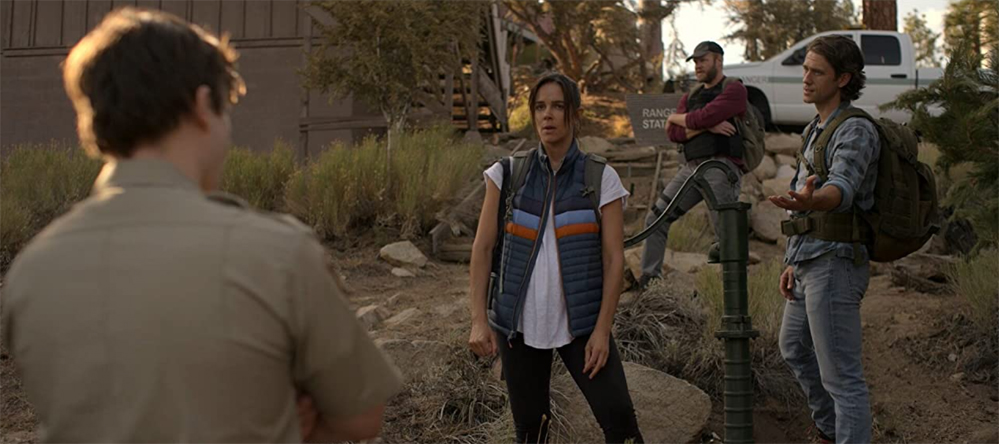
The music is very primal. It’s definitely veering away from anything electronic, focusing on how we could create a sense of danger and aloneness in the woods and allude to the threat without necessarily giving away what it is right away. So I saw this as an opportunity to experiment with some new instruments. I went out and I bought a cool leather-skinned hand drum, and I also got this instrument called a psaltery. It was a medieval instrument, and from that came the dulcimer, both of which are more Appalachian-based instruments; that’s not where this story took place, but to me it still captured an of-the-woods essence. These are instruments who people who didn’t have a lot of money could build themselves, and that’s what I wanted.
In the moments where the ferals were the main threat, I wanted the music to be both driving in their unrelenting pursuit and also to feel like they could have just been sitting around together, smacking a drum. So I did just that, with both the drum and the psaltery I had a few recording sessions just with myself, where I let myself kind of beat the instruments up and really fall into a rhythm but not try to make it pretty – but rather tap into the primal nature of these feral beings. I definitely found some unique sounds with the psaltery by detuning it – because on its own it’s quite a pretty instrument when it’s tuned correctly, but by detuning it I was able to find more of a darkness to it. Some of the main string lines and all of the percussion is from these sessions where I recorded it.
It was also important to capture the emotional journey of the parents and the turmoil and panic that they experienced when they lose their son. And so, based on some of my initial conversations with Alexis and after reading the script prior to seeing anything, I built some themes; one of them, which became the main theme, played multiple different ways throughout the episode. I think I was able to capture the heartbreak when it was played softly, and the disorienting, absolute terror and panic when it was played on a loop in a psychotic-inducing way.
“I’ll have a sound that might be the basis for a jump scare but then I may duplicate it multiple times, and then on every layer I’ll process it differently. Maybe I’ll pitch up the sound or maybe I’ll extend it so that I’ve literally taken a wave form and I’ve pulled it to be much longer than it really should be, and so now I’m getting these moments where the wave itself is breaking. Then I’ll throw some saturation on it so those breaking moments are really cutting through… It’s really about experimenting.”
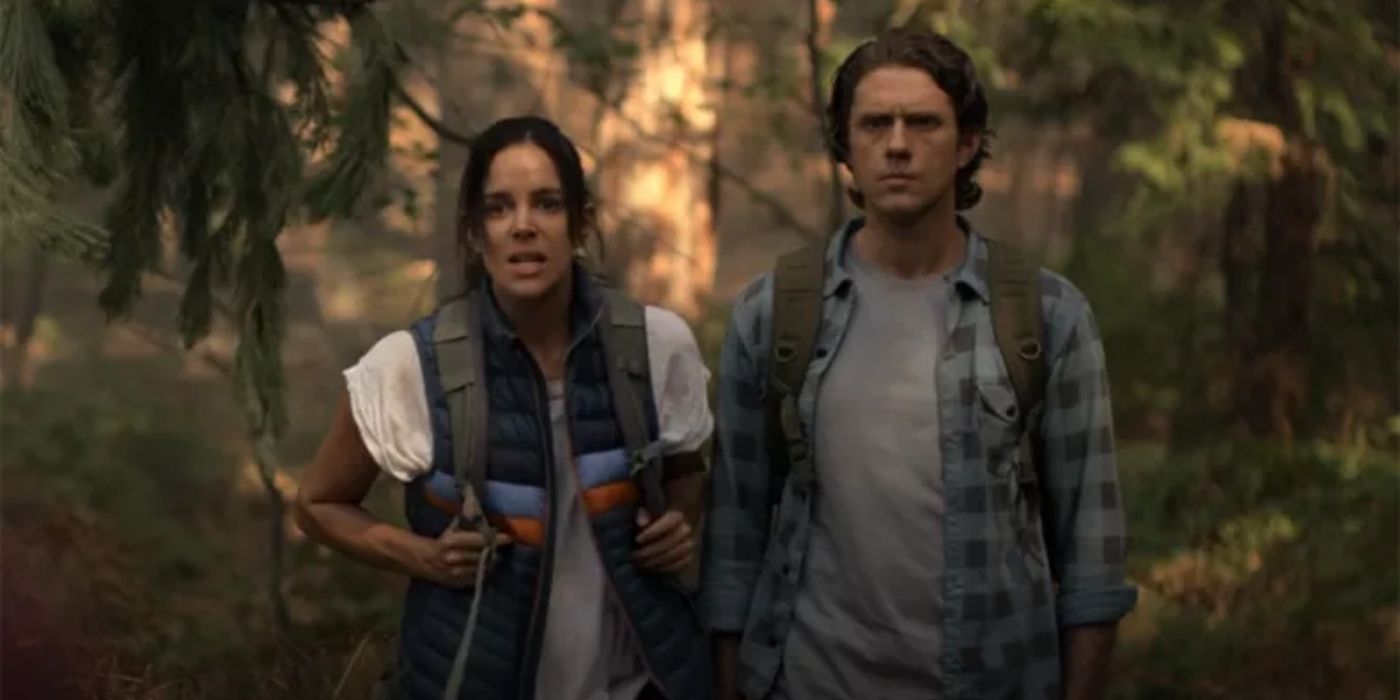
Q: You use jump scares sparingly but where you did they were quite effective. How would you describe your own technique in creating an effective and unique jump scare?
Brittany Allen: A jump scare is about setting up an expectation for an audience and then surprising them with something else. If they’re anticipating the jump scare, they’re not going to be scared. A lot of it has to do with how it’s filmed. Jump scares are also a collaborative process with sound design. In the case of “Feral” and in a lot of horror, the sound designer will focus a lot on the jump scares and they’ll add percussive elements or a high screech that maybe isn’t in the score but really creates a jolt that the audience won’t miss. For me, it’s more about ducking everything out right before the jump scare hits. It’s also about how I can push a sound to its breaking point. I work in Ableton [digital audio workstation] now, which allows for a very fluid process of manipulating and warping sounds, and oftentimes I’ll have a sound that might be the basis for a jump scare but I may duplicate it multiple times, and then on every layer I’ll process it differently. Maybe I’ll pitch up the sound or maybe I’ll extend it so that I’ve literally taken a wave form and I’ve pulled it to be much longer than it really should be, and so now I’m getting these moments where the wave itself is breaking. Then I’ll throw some saturation on it so those breaking moments are really cutting through, and then on top of that I’ve got the initial high piece that starts out dry and then has a ton of reverb that comes in and there’s some saturation on it. So it’s really about experimenting and getting to the point where I try to put myself in the audience’s shoes and step back and watch it and ask “is this coming as a shock to me? Is this something that I haven’t heard before?” That’s really through the process of experimenting, and trusting your instincts as you go, and suddenly you’ve found it. You don’t always know how you got there, but you’ve just been pulling tons of plug-ins, and playing around. You know it when you find it, though, because it’s something that’s jarring and that you maybe haven’t heard before.
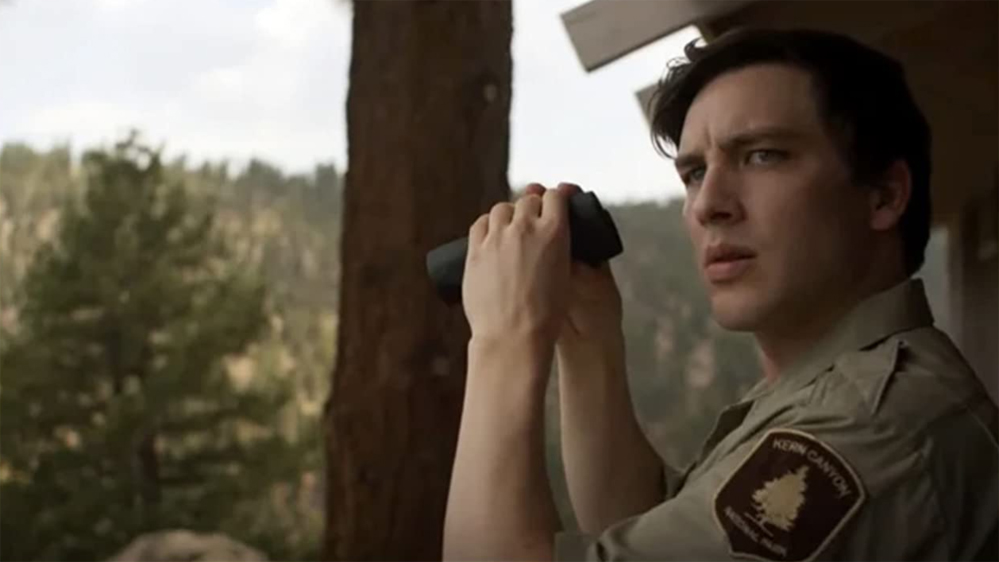
Q: I particularly liked the moment where the Park Ranger tells the protagonists about the ferals and you have these cycles of increasing tense tonality…
Brittany Allen: That part of the film actually had a lot of my own voice in it. I’m a singer and sometimes it feels appropriate to use that instrument in the scores that I work on. In general I was working with some opera throughout the piece and not all of that is myself singing, but in the case of that scene you’re talking about, it was looping my voice and playing it in different ways. There’s one sound throughout the episode that’s used a lot and it doesn’t sound at all like a voice – it sounds like this high-pitched, slow pulsing alarm. But that started as a voice and then I layered it, pitch-shifted it down, and messed with it a bunch of ways so it no longer sounded like a voice but it really is living in this frequency that’s super tense and unsettling, and cuts through in a nice way. Those two elements were really featured in that section. I wanted to create something that captured the mystifying nature of the folklore – the haunting, hypnotic nature of them learning this.
Q: You’ve also used voices when the hunter is leading them through the forest and they find the slaughtered gang, which is then reprised later during the end title…
Brittany Allen: Yeah! Thanks for noticing. That’s an opera melody which is the same melody that is playing in a more harried fashion when they first arrive at the camp site. It’s one of the first melodies we hear as they’re driving to the campsite and we reveal the forest, but it’s much faster and its played with strings and it’s looping, so there’s this crazy, dizzying effect that the theme has there. It also plays again when they lose their son and there’s this panic and this wide pullback from the lake as the parents are frantically looking for their son. When I initially found that I was coming at that theme to try and score those moments, but then I realized, if I slow this down and I keep it really sparse it’s actually a really sad theme, so then it is used multiple times throughout the episode to slowly capture the sadness that the parents are going through and the gentleness of what they’ve lost. The gore and the visual image of all of those bloody bodies is kind of an art that these ferals have made in their own way. That’s what I was saying about horror being like such a heightened genre to work within, it felt theatrical and I thought the opera worked nicely to support that too.
Q: When the ferals make their assault against the ranger station and the music kicks into gear and anxiety becomes sheer terror – how did you switch up the music to reflect these high-energy moments?
Brittany Allen: A lot of it was build off of the drums and the rhythm. I had pulled all of the drums from these sessions of me just smashing this leather hand drum, and then it was about layering it so it felt like it was many people playing the drums. To have that reflect a large group of threatening people who were attacking, I built a lot of stuff around it. That was in one of my sessions where I was playing around with the psaltery. I got that instrument because of what I thought it had in terms of its potential, but also because of its connection with the dulcimer; on a theoretical level it seemed an interesting instrument to experiment with for this project, but when I said down to play it and I realized, “Damn, this sounds too pretty!” So it wasn’t until I got the tuner out and I just started messing around with it, trying to get the strings to not sound good together, or to sound good in their atonal connection to one another, and then literally let myself beat the instrument up, hit it, rip the bow across the strings, play multiple strings at once, smash the strings, really be unafraid to do something that could have damaged the instrument. I was trying to connect more to the emotion that I was after, which was this threatening, primal, feral hungry feeling, and so that session was where I built all of the feral sounds. There are some super harsh plucks that I then brought into my computer and distorted or affected a bunch of different ways to get them to cut through in a way that’s harsh and scary.
“That’s another thing I like about horror, is that it doesn’t tell just that everything’s going to be fine and dandy.”
Q: At the end of the episode we kind of think everything’s okay and all of the sudden it’s not. Without giving away any spoilers, you’ve got this incredible reveal at the end. How would you describe your music for that final section of the film?
Brittany Allen: With that section I wanted to lean into the darkness of this resolution. That’s another thing I like about horror, is that it doesn’t tell just that everything’s going to be fine and dandy. It challenges us to accept that things often are not fine and dandy, and it is a bit of a rebellion to the kind of storytelling that insists that everything be wrapped up in a bow. I like to contribute to that on a musical level by, again, just pushing the sounds to their limit. It’s thematically important to carry a theme from the beginning of the story to the end and to really try to find all of the ways that it can live.
Q: What was most challenging for you in scoring “Feral?”
Brittany Allen: I think the most challenging thing, as a composer, in television is the pace at which TV works. It’s a very fast-paced job, and it is for everyone in every aspect of television. It’s moving at a clip and the challenge is how do I keep my eye on the deadline but stay open to my creative process and to my instincts and relax enough that I can access all of those and simultaneously push myself to do the absolute best job I can but keep my head on straight! That’s the challenge, and sometimes you don’t keep your head on straight and you just go into the abyss for a few days but then you come out the other side and your pleased with what you’ve done. That’s also one of the most exciting things about working in TV is that you don’t have a lot of time to doubt yourself, you don’t have a lot of time to procrastinate, but then on the other hand you have to deliver a lot in a short period of time. I like that about the process; it’s taught me that I can work a lot faster than I realize.
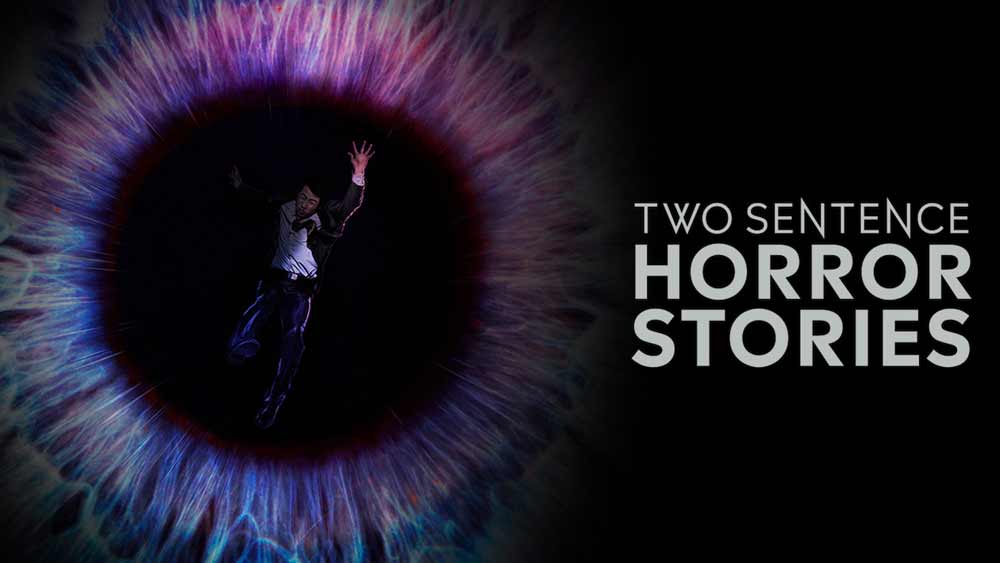
Q: You also scored an anthology series I quite enjoyed called TWO SENTENCE HORROR STORIES, inspired by the viral fan fiction of the same name. How did you accommodate the shorter length of these films and how did you treat them musically as individual shorts as well as giving the series as a whole a musical arc.
Brittany Allen: With that show, every episode is vastly different in terms of the kinds of people we’re working with, the locations, the situation, so I felt it was important to create a very individual palette for each episode. For example there was an episode last season called “Bag Man,” about this threat that came from within a child’s knapsack. There was a bit of an edge to the character and there was also an edge to the story itself, which was looking at how the prevailing sense of fear that exists in high schools these days, the things that kids shouldn’t have to think about, so I wanted to musically tap into that – both the teenage angst and the teenage pop/hip-hop-kind-of-tonality world, and then take that and really lean into the anger that kids should have to be afraid when they’re in high school. And because I was wanting to find this pop approach to the sound I was using, the question was how do I make that horror? My answer to that was to really create that dark electronica trap that is unleashed when the monster is. That was very different from the episode that came before, which was “Elliot” and was about a trans kid who is picked on and then goes down into the basement of the school and makes friends with the janitor who promises everything but he ends up getting trapped in a dangerous situation. For that I leaned more into strings and piano and I even pulled in some woodwinds because he himself played the flute in the show. So I allowed for each episode to really have its own sound. I guess the way I kept it consistent was through my approach, which was that themes are important and heart is important and a unique distorted horror sound is important. That was the overall take I had on every episode, and then I would have certain themes recur, where a character had gone through something similar or something from one episode to the next and it made sense to bring a theme back to give it that consistency.
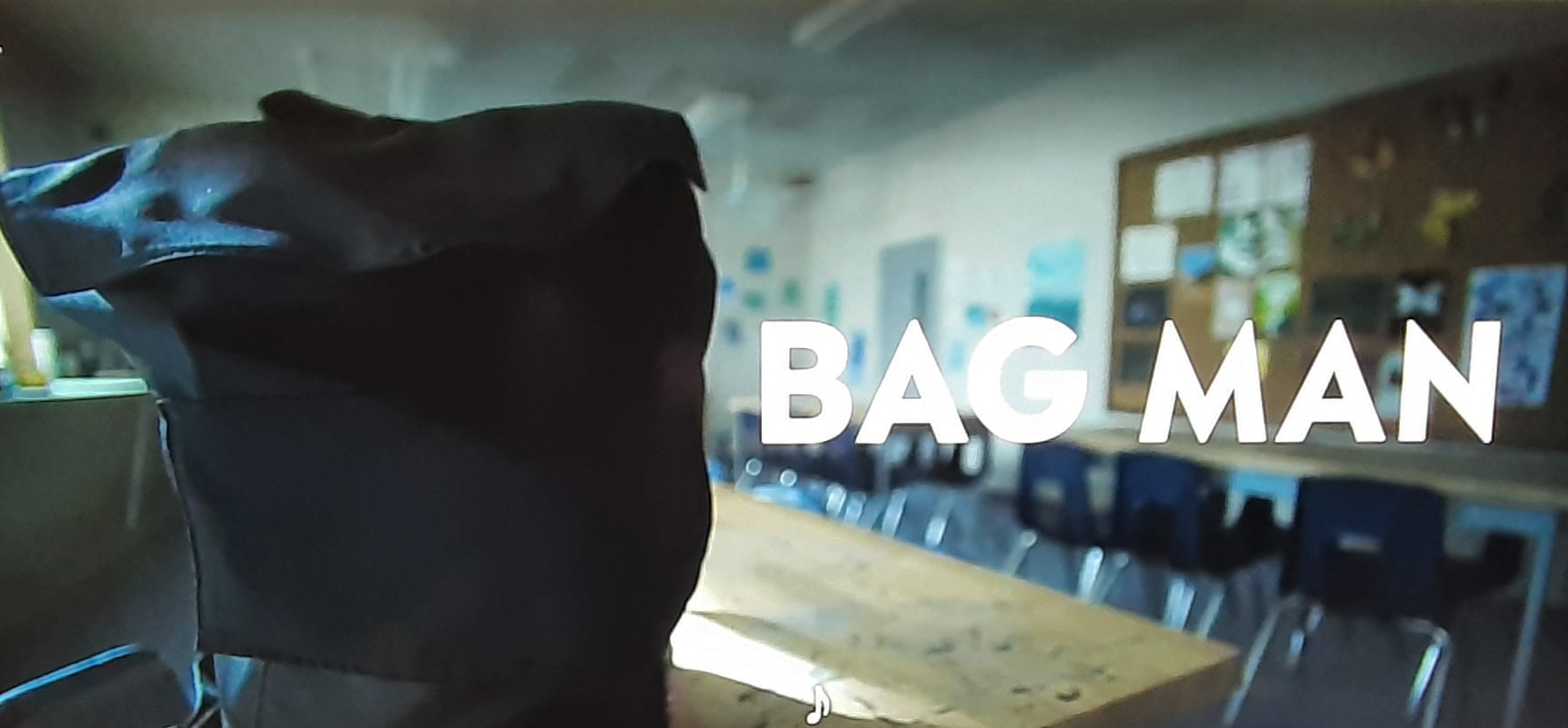
Q: What’s coming up next for you that you are able to tell us about, or any final thoughts about where you’d like to see your musical opportunities to go in the near future?
Brittany Allen: I’m just finishing up another season of TWO SENTENCE HORROR STORIES right now, and it looks like I might get my toes into an acting job that is being finalized, so it may be fun to step back into that side of things. But ultimately I want to be involved with telling great stories. I want to continue to support storytellers who are pushing the boundaries of what kinds of stories are being told and what they’re willing to explore about the human condition, and I want to support that with music. I definitely have big aspirations for where this could take me and I’m excited to be stepping into it at a time when filmmakers and companies are more open to female composers, because one of the things that I saw very clearly as I was stepping into the business was just how few women there were. It feels like an exciting time to be part of the shifting narrative.
Q: Absolutely!
Special thanks to Andrew Krop and Kyrie Hood of White Bear PR for facilitating this interview.
For more information on Brittany Allen composer, see https://brittmusic.org/

